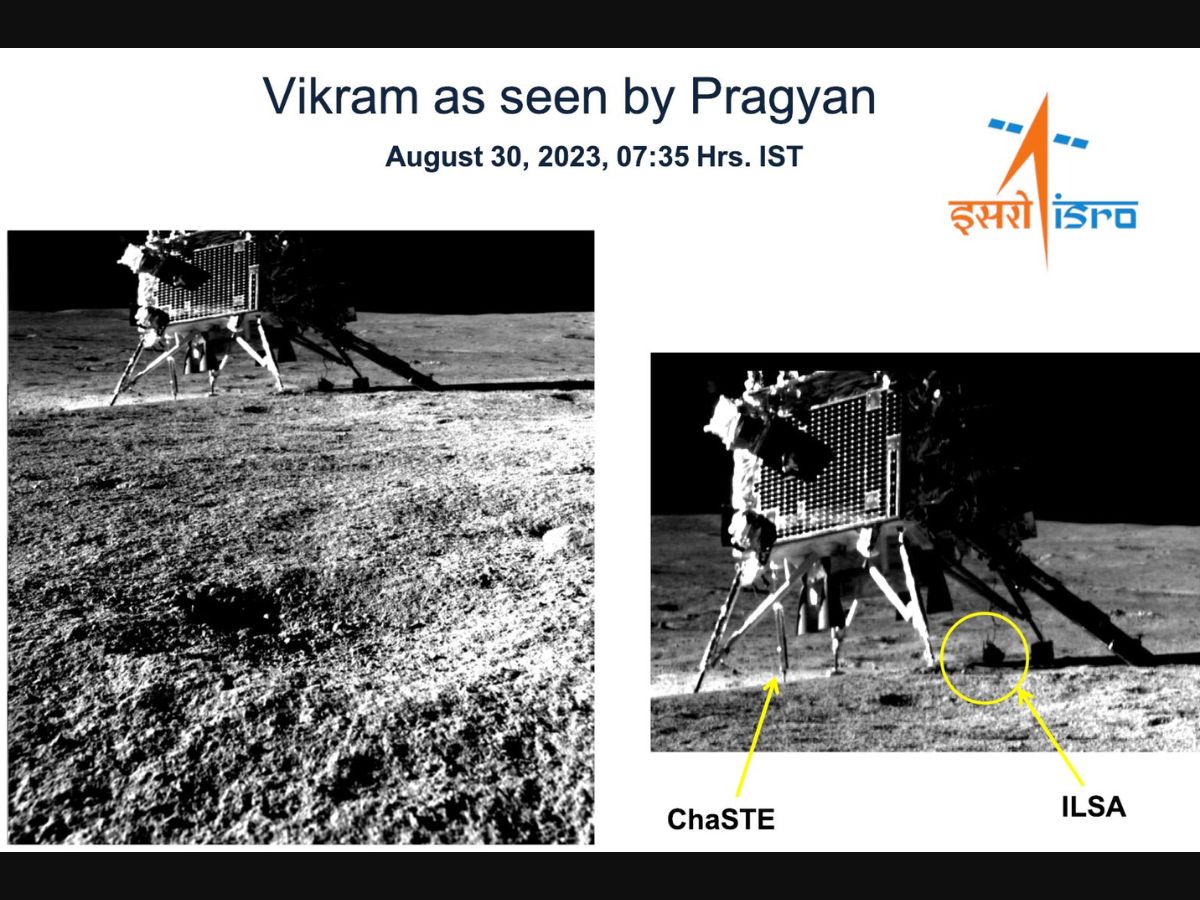‘Smile, Please’: Chandrayaan-3’s Pragyan Rover Captures Image Of Vikram Lander On Moon. See PIC
Chandrayaan-3: The picture of Vikram lander was taken by the Pragyan rover's Navigation Camera, the Indian Space Research Organisation (ISRO) said in a mission update.

Chandrayaan-3's Pragyan rover has captured an image of the Vikram lander on the Moon. The picture was taken by the Pragyan rover's Navigation Camera (NavCam), the Indian Space Research Organisation (ISRO) said in a mission update. Chandrayaan-3 landed softly on the Moon on August 23, 2023. The Vikram lander and the Pragyan rover started operations on the Moon on August 24, 2023, and are expected to conduct experiments till the first week of September. The image was captured at 7:35 am IST on August 30, 2023.
On August 30, ISRO shared the image of the Vikram lander with the caption "Smile, please📸!"
Chandrayaan-3 Mission:
— ISRO (@isro) August 30, 2023
Smile, please📸!
Pragyan Rover clicked an image of Vikram Lander this morning.
The 'image of the mission' was taken by the Navigation Camera onboard the Rover (NavCam).
NavCams for the Chandrayaan-3 Mission are developed by the Laboratory for… pic.twitter.com/Oece2bi6zE
ISRO's Laboratory for Electro-Optics Systems (LEOS) has developed all the navigation cameras for the Chandrayaan-3 mission.

Chandrayaan-3: Scientific Experiments Performed By Vikram And Pragyan On The Moon So Far
Chandrayaan-3 has been making groundbreaking discoveries and conducting detailed scientific experiments ever since the payloads onboard Vikram and Pragyan were turned on. On August 29, the Laser-Induced Breakdown Spectroscope (LIBS) instrument onboard Pragyan confirmed the presence of sulphur on the Moon’s south pole, after conducting first-of-their-kind in-situ experiments. LIBS also detected other elements on the Moon’s south pole: aluminium, calcium, iron, chromium, titanium, manganese, silicon, and oxygen.
Instruments onboard orbiters sent to the Moon earlier could not have performed experiments to “unambiguously” confirm the presence of sulphur on the Moon’s south pole, according to ISRO.
ALSO READ | Chandrayaan-3's Pragyan Rover Payload Confirms Presence Of Sulphur On Moon's South Pole. Know More
LIBS is still conducting experiments to detect the presence of hydrogen on the lunar south pole.
The Chandra’s Surface Thermophysical Experiment (ChaSTE) payload onboard Vikram has produced the first temperature-depth profile of the Moon’s south pole.
ALSO READ | Chandrayaan-3 Produces First-Ever Temperature-Depth Profile Of Moon's South Pole. Know More
On August 27, ChaSTE measured the temperature profile of the lunar topsoil around the Moon’s south pole. With these observations, scientists can understand the thermal behaviour of the lunar surface better.
ChaSTE’s temperature probe, which can penetrate into lunar soil up to a depth of 10 centimetres beneath the Moon’s surface, and 10 individual temperature sensors onboard the payload measured the variation of lunar surface temperatures with depth.
Related Video
Southern Rising Summit 2024: How Important is Self-Awareness? Insights from Anu Aacharya | ABP LIVE





































